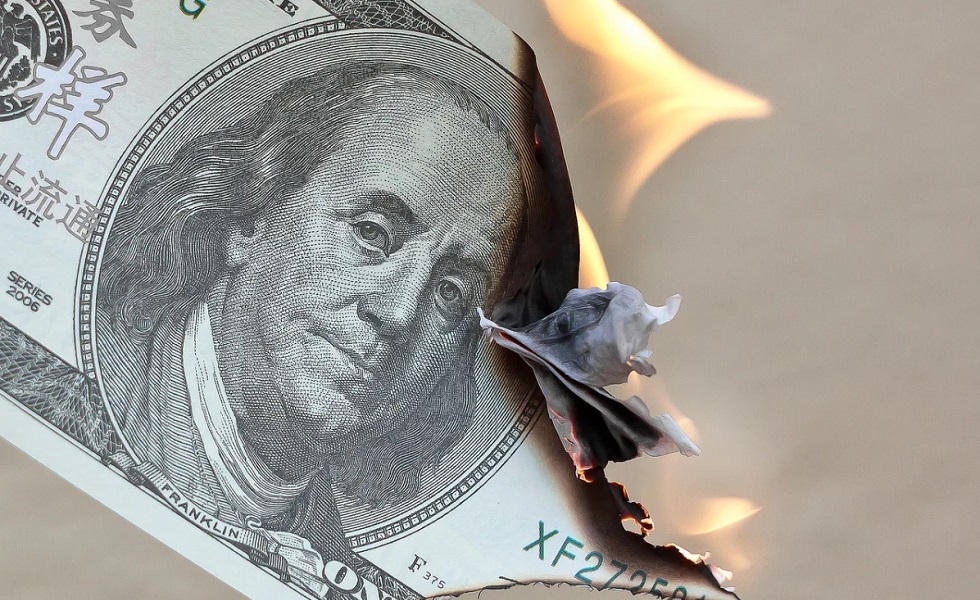Capital Group: Quick-take on the US inflation outlook

Below is a brief recap of the views of Jared Franz, a US economist at Capital Group, Tim Ng, a fixed income portfolio manager who is also a member of the interest rates team as well as Investment Director, Jeremy Cunningham.
US inflation surprised to the upside in April with the core consumer price index rising 0.9% in April and headline CPI up 0.8%1. This materially changes the maths on inflation. Even if the monthly trend in inflation decelerates to 0.15%, slightly below the pre-pandemic trend, we estimate that the annual change in core CPI (all items less food and energy) will stay above 2.5% for at least the next year. In all likelihood, the monthly trend will probably be much firmer than 0.15% over the coming months.
This in turn implies the year-on-year rise in core personal consumption expenditures (PCE) is likely to accelerate above 2.25% and remain there for an extended period. In essence, we are at the Federal Reserve’s target for inflation. While we still have significant progress to make on the employment front, April’s inflation report raises the probability that the Fed may look to taper its asset purchases earlier than expected. Thus, we think yields in the belly of the yield curve (five-year and seven-year Treasuries) will need to rise to reflect this higher probability.
This could change the timing of an interest rate hike that is currently expected in 2023 at the earliest. At least for now, it's too early to move that timing forward; the data is too volatile and the outlook is too uncertain for the Fed to make any major adjustments. What we're seeing today is not due to a virtuous labour demand-driven inflation cycle (fundamental), but the reopening of the economy and supply bottlenecks, which we view as temporary. That could change.
If we see a string of strong employment reports (narrowing the gap on the record 8 million job vacancies in March) AND a bigger fiscal package AND core inflation trending above 2.5%, it would certainly put the Fed in play for an earlier taper and rate hikes than what we are expecting. However, it's also worth remembering that the Fed wants to see inflation above or at its 2% target rather than constantly undershooting, as well as broad-based and inclusive employment.
So, a reset of inflation at a higher level is consistent with the central bank’s long-term goals. The Fed’s June 16 meeting should provide some indication of their thinking. Lastly, it’s worth recapping that in 2011, after the global financial crisis (GFC), inflation did not stay above 3% for long because of unanticipated negative post-GFC shocks. That could happen again.
Inflation outlook across the rest of the world
Tapering has already been announced by the Bank of England and the Bank of Canada. The Bank of England expects activity to rebound strongly as the economy re-opens and recent indicators have shown greater resilience in the real economy despite continuing mobility restrictions. Furthermore, higher global commodity prices are encouraging industrial companies to raise prices and retailers are now expecting higher selling prices. That said, CPI inflation remains below target and, with substantial spare capacity, underlying inflationary pressures are muted. UK policy rates are likely to remain on hold till there is greater clarity over the speed and scale of the economic recovery.
The ECB could reduce its PEPP2 purchases as well - as euro-zone inflationary pressures have become more widespread - although it’s not clear how much of this is temporary given uncertainty about the shock from the pandemic, recent movements in currencies and global commodity prices, the amount of spare capacity, and the prospects for wages. The ECB announced no change in its monetary policy following its latest policy meeting, but it’s clear that there is a growing division on the council between those officials who believe there is a need for even easier policy and those who believe the ECB will soon have to prepare markets for the withdrawal of the PEPP. For now, both sides are willing to compromise on unchanged policy with a willingness to increase/decrease the pace of asset purchases according to a judgment about overall ‘financing’ conditions in the euro zone. If the economy recovers as expected with inflation picking up, more hawkish policymakers are likely to assert their case forcefully. The ECB will complete its strategy review this autumn and then signal its intentions for PEPP, which is due to expire at the end of March 2022.
Elsewhere in the developed world, inflation is far from the headline target of 2% in Japan, both because of the output gap and the government relying on price cuts for its stimulus efforts. As a result, the Bank of Japan will likely maintain an accommodative stance for the foreseeable future.
Higher than expected inflation announcements have also appeared in emerging markets. The combination of higher commodity prices (although some governments have imposed measures to reduce the impact of higher food and energy prices on CPI), base effects, cost-led pressures from EM currency weakness (particularly from the higher yielding countries) and supply bottlenecks have led to a broad-based acceleration in inflation. Higher than expected consumer price numbers have been printed in Mexico, Brazil, Chile, Colombia, the Czech Republic, Hungary and Poland, while produce price inflation surprised to the upside in China. Central banks in both Russia and Brazil have started to hike policy rates. The Russian central bank raised rates by 25bp in March and a further 50bp in April, while the Brazilian central bank raised policy rates to 75bp in March.







